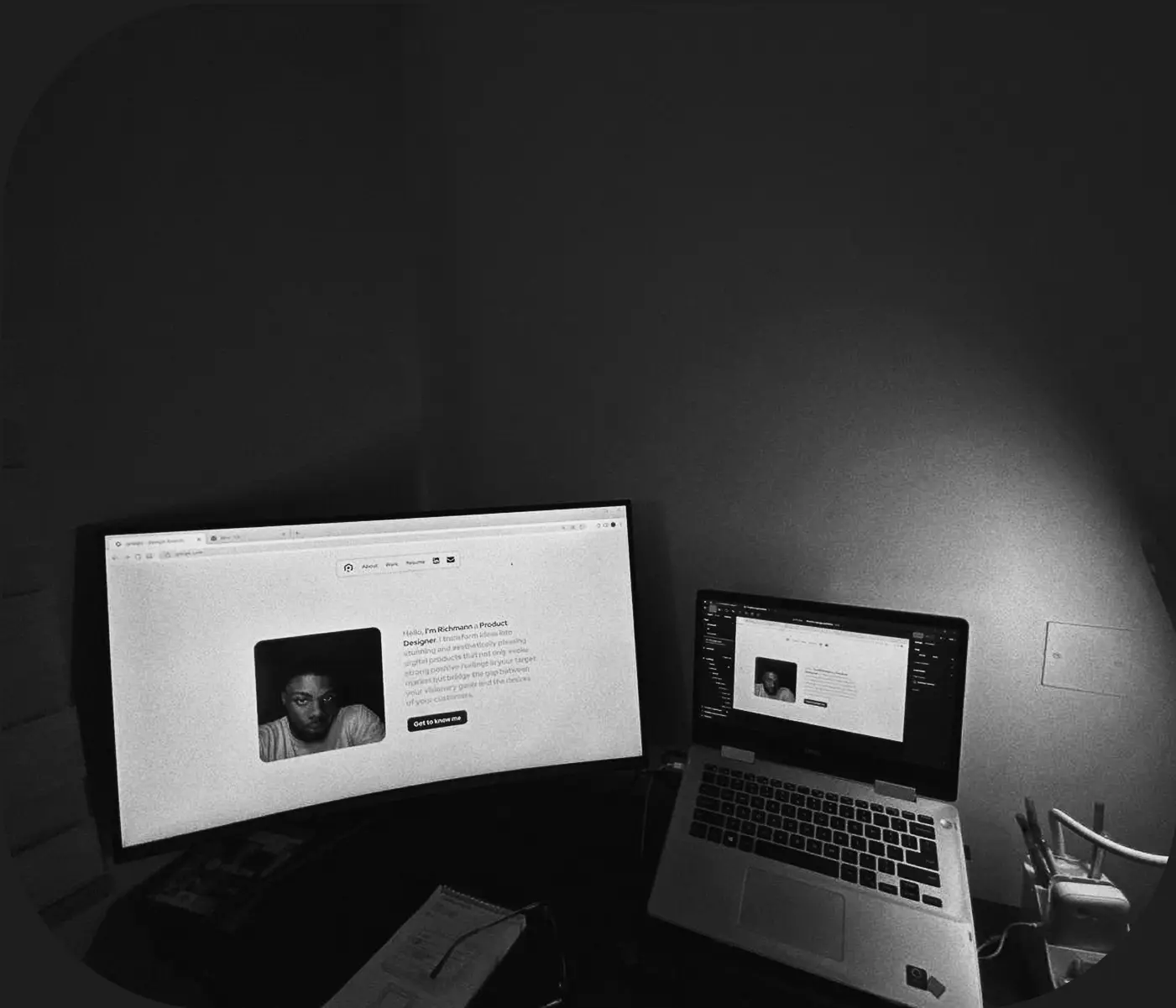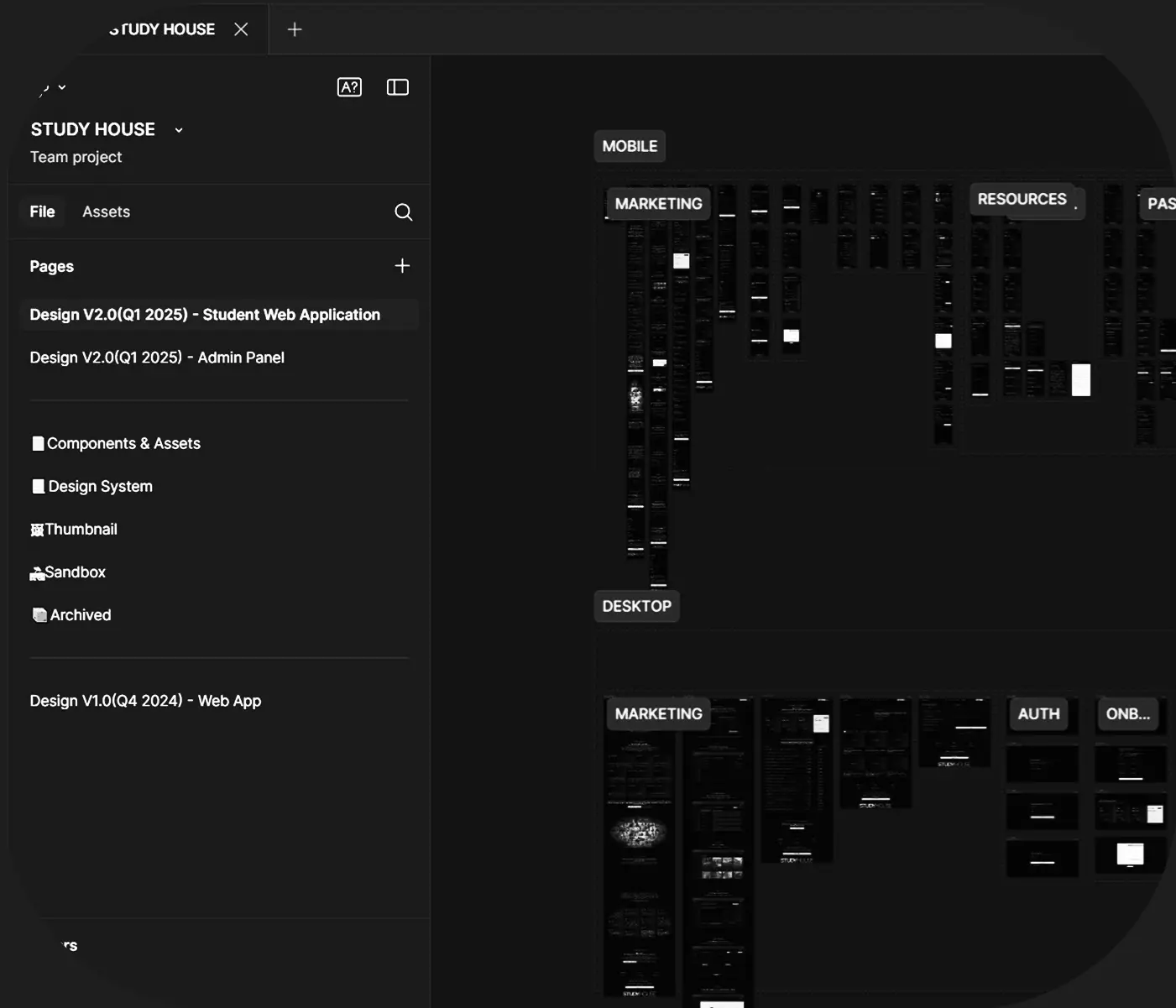Richmann Addai
richmanaddai@gmail.com
A quick look at how I think, work, and build across design, code, and
collaboration.
These are the questions I get most, and the answers that quietly guide everything
I do.
Q1: How did the hybrid role come about?
I started on the engineering path, drawn to building things that solve problems. But quickly realized that functionality needs form. Interfaces need intention and most often no one got the translation from design to code right. So I leaned into design. It wasn’t about changing lanes. It was about building fluency across both. Today, I think like a developer, work like a designer, and ship like someone who understands both.
Q2: How does your coding background shape your design?
It grounds it. Knowing how things are built means my designs are more implementation-aware — structured, responsive, and considerate of edge cases. It also means I can speak dev fluently, bridge teams, and design with real constraints in mind from the start.
Q3: What’s something people often misunderstand about design?
That it has to be flashy to be good. It doesn’t. Some of the best design is almost invisible and never calls attention to itself, just quietly making everything else make sense. That’s not boring. That’s discipline.
Q4: What does your design process look like?
It’s fluid. Some days I’m sketching low-fidelity flows, other times I’m remixing an old file in Figma because the structure works. I lean on reference, reuse patterns when they still hold, and know when to reinvent but only if it earns its keep. My process is fast, responsive, and always built to serve the problem, not the portfolio.
Q5: Do you follow a specific methodology like Design Thinking or Double Diamond?
I see them as reference points, not rules. Every project has its own rhythm. Some need structure, others need speed. What I care about is getting to clarity: understanding the problem, building context fast, and choosing the right shape of process for the challenge.
Q6: How do you balance creativity with constraints?
That’s where the work lives. Creativity is sharper when it knows its boundaries. My background in front-end development helps here. I’m always thinking in real systems: performance, scalability, responsiveness. It’s not about just pushing pixels. It’s about pushing in the right direction, with all the constraints accounted for.
Q7: Do you have a signature design style?
I lean toward minimalism and not in the trendy, sterile sense, but in how I strip away the unnecessary to let the real story shine. I don’t design to make things look like “me”; I design to make them feel like the brand. If there’s a common thread in my work, it’s clarity, restraint, and that subtle final polish that makes something well thought out even in the invisible corners.
Q8: How do you approach speed?
I aim to build something real quickly: a screen, a flow, a mock. Something the team can react to. Not because speed is always the answer, but because momentum matters. The sooner we have something tangible, the sooner we can refine. Not haste. Just intentional, iterative movement.
Q9: Where do you draw inspiration from?
Context first. The problem tells me where to look. Sometimes it’s reference. Sometimes it’s books, motion, architecture, old screenshots. I stay observant and steal like an artist. What matters isn’t the input but in how I translate it.
Q10: Do you work better solo or with a team?
Both, depending on the phase. I move fast and think deeply on my own, but the best results happen when ideas are challenged, sharpened, and refined with others. I don’t believe in lone genius. I believe in collaboration that respects the process and the people.
Q11: What do you value most in collaborators?
Clarity. Curiosity. And honesty. The willingness to challenge ideas without ego. Developers who care about experience. PMs who respect the mess of creativity. Founders who trust but still question. I’ve done my best work in rooms where ideas compete, not egos.
Q12: What happens when a project doesn’t go as planned?
We pivot. I don’t get precious about early ideas. If something’s not working, we change it. What matters is getting to the best outcome. Good process is flexible. Good teams know when to shift.
Where it all comes together:
This mindset in working across design and development, balancing speed with clarity, and building with both users and systems in mind shapes everything I touch. Whether it’s a founder’s first product, a redesign with scale in mind, or a concept built to explore new ground, I treat every project like a collaboration between idea, execution, and experience.


